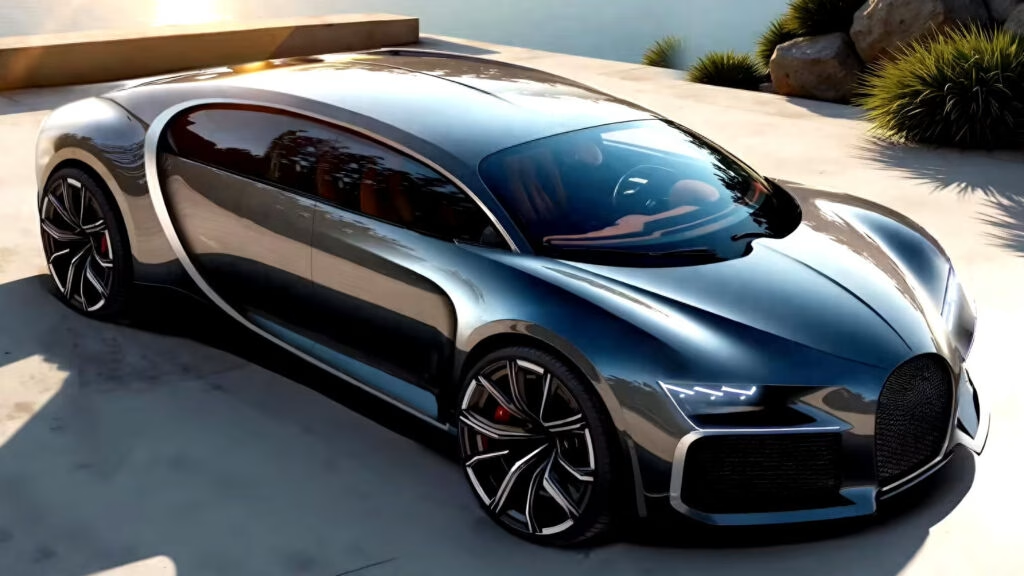Why Is a Vacuum Maker Building a Car That Looks Like a Bugatti?
If you’ve ever wondered what happens when a company known for vacuum cleaners decides to take on the world of hypercars, Dreame Technology just gave us an answer—one that’s turning plenty of heads. Dreame, a Chinese tech firm best known for its high-end home appliances, has revealed renderings of its very first electric vehicle. And let’s just say, it’s not shy about its inspiration. The car’s silhouette, proportions, and signature details look uncannily like a Bugatti Chiron, only stretched out with four doors and a wheelbase that seems to go on for days.
So, why would a vacuum company make a move like this? In China, tech giants are increasingly crossing into the automotive world, betting that their expertise in batteries, software, and consumer electronics can shake up the traditional car industry. Dreame’s founder, Yu Hao, has even described the company as “China’s answer to Apple”—ambitious, sure, but not entirely out of left field given the country’s recent track record in EV innovation.
What Sets Dreame’s EV Apart From the Real Bugatti Chiron?
At first glance, you’d be forgiven for thinking Dreame’s car is a Chiron with a growth spurt. The horseshoe grille, the central spine running the length of the car, and the bold C-shaped rear quarter motif are all present and accounted for. But look closer, and you’ll spot some differences. The headlights have a unique design, and the interior is a world away from Bugatti’s analog luxury.
Inside, Dreame’s EV ditches the Chiron’s bank of dials and milled-aluminum steering wheel in favor of a massive widescreen tablet above the console and a secondary display below. This is a nod to the digital-first approach that’s become standard in Chinese EVs. In fact, a 2023 McKinsey report found that over 60% of Chinese car buyers now expect large, integrated touchscreens and advanced connectivity features—something legacy European brands have been slower to adopt.
Is Dreame Actually Serious About Building This Car?
It’s easy to dismiss these renderings as vaporware, but Dreame seems intent on making this car a reality. The company plans to unveil a physical prototype at the Consumer Electronics Show (CES) in Las Vegas this coming January. And they’re not just thinking about a one-off showpiece. Dreame is actively scouting production sites in Berlin, Germany—including locations right next to Tesla’s Gigafactory. That’s a bold move, signaling they want to play in the big leagues, not just make headlines.
To help make this leap, Dreame is reportedly in talks with BNP Paribas, a major French bank, to secure the financing needed for its automotive ambitions. This kind of cross-industry partnership is becoming more common as non-traditional players look to disrupt the car market. According to Deloitte’s 2024 Global Automotive Consumer Study, over 30% of new entrants in the EV space now come from outside the traditional auto sector.
Will Dreame’s Hypercar Actually Outrun Bugatti and Koenigsegg?
Dreame isn’t just aiming for style points—they’re talking about performance that could rival or even surpass the likes of Bugatti and Koenigsegg. While the Chiron boasts a quad-turbo W16 engine with nearly 1,500 horsepower, and its successor, the Tourbillon, pushes 1,775 hp from a hybrid V12, Dreame’s car will be a pure electric vehicle. The company claims it will launch in 2027 with specs designed to leave even the world’s fastest hypercars in the dust.
Of course, bold claims are easy to make. Delivering on them is another story. But China’s EV sector has a habit of turning audacious promises into reality. Take NIO and XPeng, for example—both started as upstarts and are now exporting cars to Europe and beyond. If Dreame can leverage its expertise in battery tech and manufacturing scale, it might just have a shot at shaking up the hypercar hierarchy.
Could Dreame Face Legal Trouble Over the Design?
Let’s address the elephant in the room: Dreame’s car looks a lot like a Bugatti. Like, a lot. While it’s not an exact copy, the resemblance is close enough to raise eyebrows—and possibly lawsuits. Intellectual property disputes are nothing new in the auto industry, especially when it comes to high-profile designs. Bugatti’s legal team is likely watching this development closely.
However, design disputes can get murky. In recent years, courts have sometimes sided with companies that make significant functional or technological changes, even if the visual similarities are striking. Dreame’s use of a four-door layout and a fully digital interior could be enough to differentiate it—at least in the eyes of some regulators. Still, it’s a legal gray area, and the outcome could set a precedent for how tech companies approach car design in the future.
What Does This Mean for the Future of Hypercars?
Dreame’s move is part of a much larger trend: the blurring of lines between consumer electronics, tech, and automotive. As EVs become more about software, connectivity, and user experience, companies with backgrounds in those areas see an opening. The global EV market is expected to grow by over 20% annually through 2030, according to BloombergNEF. That’s a lot of room for new players to carve out a niche.
The big takeaway? Reinventing the hypercar isn’t about perfection—it’s about smarter adjustments. Start with one change this week, and you’ll likely spot the difference by month’s end. Whether Dreame’s Bugatti-inspired EV becomes a legend or a footnote, it’s proof that the future of cars will be shaped by those willing to cross boundaries—and maybe ruffle a few feathers along the way.

